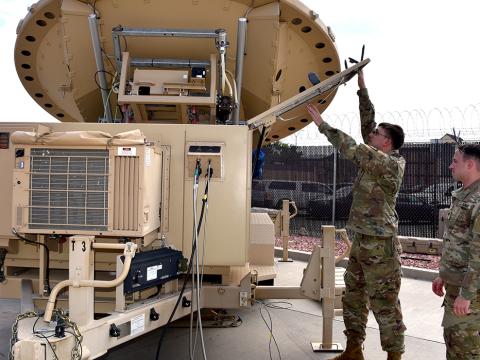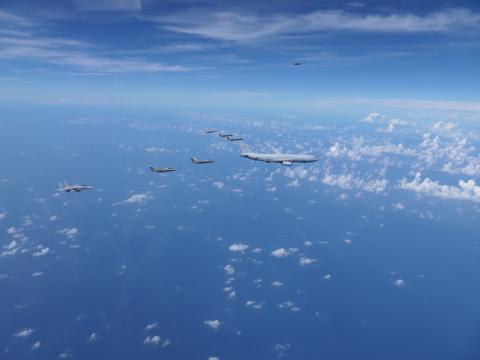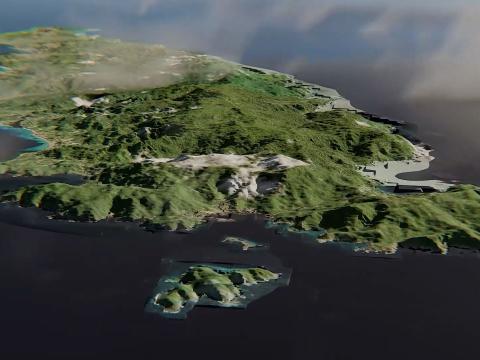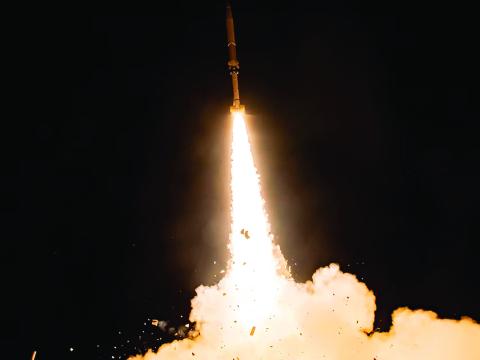Introducing the SpaceVerse
With an emphasis as a digital force since its beginnings two plus years ago, the U.S. Space Force is now endeavoring to build the so-called SpaceVerse, a universe that combines digital tools and physical assets to advance guardian innovation and operations in a near-peer adversarial environment.
The Space Force’s vision of the SpaceVerse is defined as: “A secure digital environment of converged physical and digital realities, fostering a co-create culture and immersive experience through shared platforms, extended reality workspaces and the real-time operational capabilities needed to organize, train and equip human and nonperson entities (NPE) guardians and partners.”
Four layers will make up the SpaceVerse: a digital workspace, core capabilities, a partner ecosystem and the guardian culture, explained Michael Torres, chief, Enterprise Information Technology, U.S. Space Force, speaking June 8 at AFCEA and George Mason University’s C4I and Cyber 2022 Symposium, held virtually.
“The majority of my job is not thinking about today's technology,” Torres stated. “It's not thinking about tomorrow’s technology but leapfrogging ahead and designing the future technologies that the Space Force will need to do space operations and support battle space scenarios.”
As such, the concept will embrace an immersive experience of visual images, auditory stimuli and haptic sensors. This kind of combined, fused data processing will improve information retention for guardians, Torres asserted, saying, “interaction and feedback with the environment will improve cognitive outcomes.”
The goal with SpaceVerse is to achieve an interactive capability that allows Space Force guardians and partners to work together to engage in space operations as well as in space battle scenarios. “We are not looking to walk around with little dragon avatars and fight each other or high-five each other virtually,” he joked. “The goal is not to achieve ‘Ready Player One status,’ like in the movie.”
The planned digital workspace will feature hyperautomation; robotic or automated force multipliers—NPEs; simulated digital twin platforms for operations; simulation to operational fidelity; and a community workspace.
“Since the beginning of our space program almost entirely all of our workforce works from behind terminals,” the chief noted. “Yet we are doing new-age operations on old-age technology, and when I say old age, I'm literally talking about 20-, 30-, 40-year-old technology. We need to understand how to do remote space operations and manage space assets more efficiently from the ground.”
Initially, the SpaceVerse will bring a more interactive capability to the Space Force’s internal workings and operational commands such as the Space Training and Readiness Command, the Space Warfighting Analysis Center and Space Systems Command.
The converged digital and physical domain environment will be a natural fit for those organizations that handle training and education; force design, analysis and modeling; and development, acquisition, launch and logisitics, respectively. In time, Torres said, the SpaceVerse would be integrated with academic partners, allies and other trusted government entities.
It would also be a digital environment that supports all security classes, he noted, from unclassified to secret, top secret and above top secret. “The general premise is that it becomes the new workspace that allows our guardians to not only engage in their day-to-day jobs but also to contribute to overall functions and data sets,” the chief clarified. “We [would] create a culture of co-creation.”
Moreover, guardians would be able to view data or spacecraft from all angles. “It's about the dimensionality of data,” Torres continued. “And when we say immersive, it's basically what we call extended reality which is all dimensions, 2D to hybrid D, as well as the ability to engage all of those dimensions of data regardless of the type of method that you're engaging in.”
Such a converged world may shape guardians to be specialists in more than in one area. “With today’s technology, we have modelers building models,” the chief offered. “We have simulators that are researching the models and then we have operators that are hoping that the research and the simulations performed, and the models that were built by the modelers are actually true to scale and function correctly. In the future we hope that we don't have three different roles. We hope that a guardian is a modeler, simulator and operator.”
In that kind of SpaceVerse, guardians in near to real time could run thousands of simulations and in a fraction of a second, make modifications to the models as the physics and battle space data come in, augmented by artificial intelligence capabilities. “This would produce possible outcomes where they can now drive decision making and immediately push that decision into real-world scenarios using digital operational assets,” Torres stated.
To create the SpaceVerse, the service will start by conducting several pilot programs in fiscal year 2023.
“We are looking to run a number of pilots in FY 2023 and begin building the SpaceVerse in FY 2024,” Torres announced. “We're looking to lay down the foundation for the SpaceVerse through the pilots that we're going to run next year.”





Comments